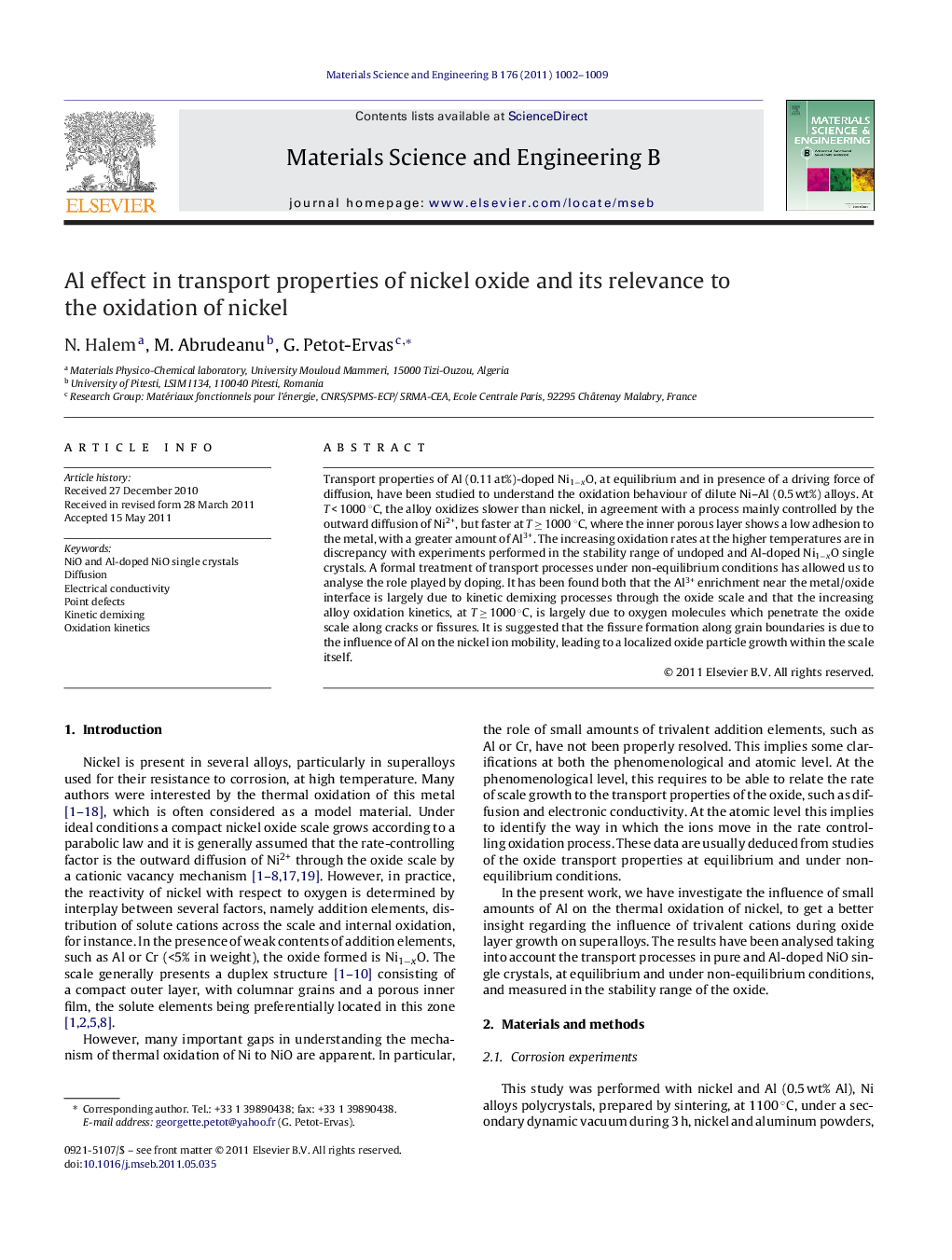| Article ID | Journal | Published Year | Pages | File Type |
|---|---|---|---|---|
| 1529973 | Materials Science and Engineering: B | 2011 | 8 Pages |
Transport properties of Al (0.11 at%)-doped Ni1−xO, at equilibrium and in presence of a driving force of diffusion, have been studied to understand the oxidation behaviour of dilute Ni–Al (0.5 wt%) alloys. At T < 1000 °C, the alloy oxidizes slower than nickel, in agreement with a process mainly controlled by the outward diffusion of Ni2+, but faster at T ≥ 1000 °C, where the inner porous layer shows a low adhesion to the metal, with a greater amount of Al3+. The increasing oxidation rates at the higher temperatures are in discrepancy with experiments performed in the stability range of undoped and Al-doped Ni1−xO single crystals. A formal treatment of transport processes under non-equilibrium conditions has allowed us to analyse the role played by doping. It has been found both that the Al3+ enrichment near the metal/oxide interface is largely due to kinetic demixing processes through the oxide scale and that the increasing alloy oxidation kinetics, at T ≥ 1000 °C, is largely due to oxygen molecules which penetrate the oxide scale along cracks or fissures. It is suggested that the fissure formation along grain boundaries is due to the influence of Al on the nickel ion mobility, leading to a localized oxide particle growth within the scale itself.
► Electrical conductivity and chemical diffusion in Al-doped nickel oxide single crystals. ► Transport properties under non-equilibrium conditions. ► Kinetic demixing-influence of Al on nickel oxidation.
